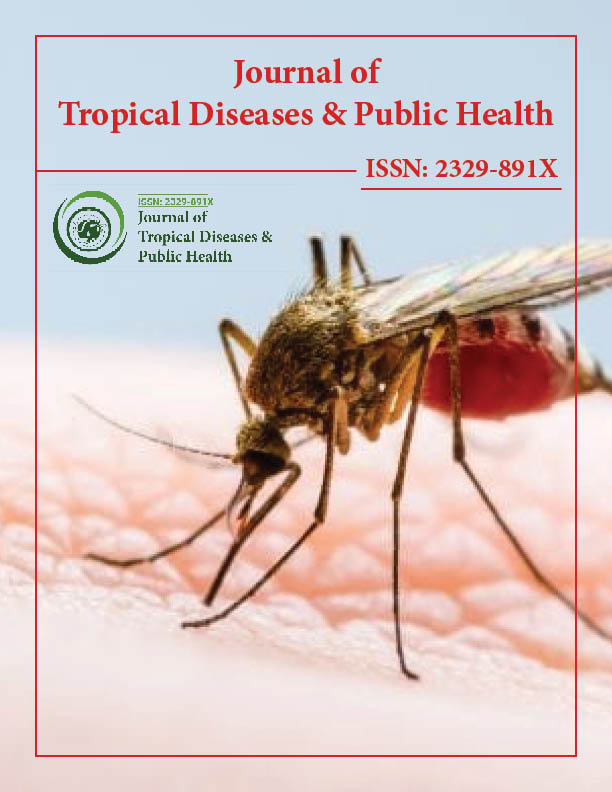Indexed In
- Open J Gate
- Academic Keys
- ResearchBible
- China National Knowledge Infrastructure (CNKI)
- Centre for Agriculture and Biosciences International (CABI)
- RefSeek
- Hamdard University
- EBSCO A-Z
- OCLC- WorldCat
- CABI full text
- Publons
- Geneva Foundation for Medical Education and Research
- Google Scholar
Useful Links
Share This Page
Journal Flyer

Open Access Journals
- Agri and Aquaculture
- Biochemistry
- Bioinformatics & Systems Biology
- Business & Management
- Chemistry
- Clinical Sciences
- Engineering
- Food & Nutrition
- General Science
- Genetics & Molecular Biology
- Immunology & Microbiology
- Medical Sciences
- Neuroscience & Psychology
- Nursing & Health Care
- Pharmaceutical Sciences
Opinion Article - (2025) Volume 14, Issue 2
Impact of Seasonal Labor Migration on Tuberculosis Treatment Continuity in Rural Tropical Regions
Samuel Ndiritu*Received: 26-May-2025, Manuscript No. JTD-25-29796; Editor assigned: 28-May-2025, Pre QC No. JTD-25-29796 (PQ); Reviewed: 11-Jun-2025, QC No. JTD-25-29796; Revised: 18-Jun-2025, Manuscript No. JTD-25-29796 (R); Published: 25-Jun-2025, DOI: 10.35241/2329-891X.25.13.479
Description
Tuberculosis remains a persistent public health concern in many rural tropical regions, particularly among low-income populations who rely on seasonal labor for their livelihoods. Although free treatment is widely available in many countries through national tuberculosis programs, a significant proportion of patients fail to complete the required therapy, leading to relapse and development of drug resistance. One of the less examined but highly impactful factors contributing to this trend is seasonal migration for agricultural or construction work.
Many rural residents in tropical countries depend on work in distant towns or plantations during the planting and harvesting periods. This movement can last from several weeks to several months, depending on crop cycles or construction project timelines. Individuals undergoing tuberculosis treatment at their home facilities often leave before completing their course of medication, either because they are unaware of the consequences of interruption or because their economic needs take precedence over health concerns. In such cases, patients may miss follow-up appointments or be unable to access the same medications in their new locations.
Continuity of care is disrupted not only by physical movement but also by the lack of a reliable system to track and transfer patient records. Health facilities in different regions often operate independently, with limited communication between them. Even when patients try to resume treatment at a different location, they may face difficulties due to a lack of documentation, unfamiliar staff, or variations in drug supply. In many cases, they abandon treatment entirely or self-medicate with leftover pills or drugs obtained from informal sources.
Stigma presents another obstacle. In some communities, a tuberculosis diagnosis is associated with moral judgment or assumed connections to other illnesses, particularly HIV. Migrant workers may be reluctant to disclose their status or seek care in new locations due to fear of social exclusion or discrimination. In certain areas, there are even reports of individuals avoiding public health clinics altogether, preferring to hide symptoms or rely on traditional remedies. These behaviors delay diagnosis and increase transmission within mobile and host populations.
Strategies to address this issue require tailored approaches that consider the mobility of affected individuals. One approach that has been piloted in several countries involves the use of portable treatment cards and electronic registries accessible by multiple facilities. When properly implemented, these systems enable health workers in different locations to monitor treatment adherence and adjust regimens without requiring repeated testing or re-enrollment. However, the success of such systems depends heavily on infrastructure, digital literacy, and interfacility cooperation.
Community-based treatment models have also shown potential in improving outcomes among mobile populations. By training lay health workers or volunteers in remote areas to administer medications and report adherence, some programs have managed to reach patients even after they relocate temporarily. In areas with predictable migration patterns, mobile treatment units or outreach services can be deployed seasonally to meet patients where they are. However, resource constraints often limit the scale and duration of such interventions.
Another factor that should not be overlooked is patient education. Many patients interrupt treatment not out of negligence but because they are unaware of the long-term consequences. Clear communication about the importance of completing the full course, the risks of drug resistance, and the availability of care at multiple locations can improve adherence. Messaging should be delivered in local languages and adapted to cultural contexts to increase acceptance. Agricultural cooperatives and labor associations could also serve as platforms for disseminating information and identifying individuals at risk of treatment default.
Conclusion
While tuberculosis elimination remains a long-term objective in many tropical countries, progress will depend on addressing the complex realities faced by populations in motion. The needs of seasonal laborers must be incorporated into national tuberculosis control strategies. Strengthening health systems to account for population movement, improving coordination between facilities, and ensuring the availability of treatment across different locations are all necessary steps. Without this flexibility, mobile patients will continue to fall through the cracks, perpetuating cycles of illness and resistance that threaten broader public health gains.
Citation: Ndiritu S (2025). Impact of Seasonal Labor Migration on Tuberculosis Treatment Continuity in Rural Tropical Regions. J Trop Dis. 13:479
Copyright: © 2025 Ndiritu S. This is an open-access article distributed under the terms of the Creative Commons Attribution License, which permits unrestricted use, distribution and reproduction in any medium, provided the original author and source are credited.

